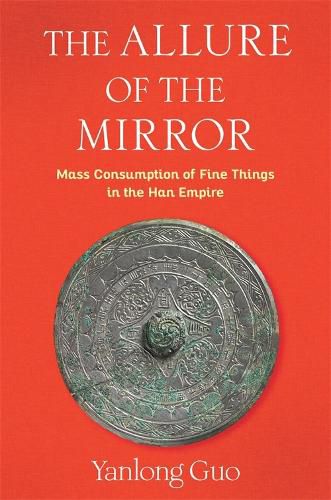Readings Newsletter
Become a Readings Member to make your shopping experience even easier.
Sign in or sign up for free!
You’re not far away from qualifying for FREE standard shipping within Australia
You’ve qualified for FREE standard shipping within Australia
The cart is loading…






In Han China (202 BCE-220 CE), few luxury objects were as widely coveted as bronze mirrors. Typically circular and ranging from seven to thirty centimeters in diameter, these mirrors were crafted from high-tin bronze, with highly reflective surfaces on the front and intricate designs and auspicious inscriptions on the reverse.
The Allure of the Mirror explores how and why these objects, historically known as haowu ("fine things"), became so beloved throughout early imperial China. Tracing their production and consumption-from manufacture in imperial, princely, and private workshops to their roles in life and death-Yanlong Guo uncovers the varied ways these seemingly trivial objects took on social and cultural significance. Across social classes, mirrors had a wide range of uses as status symbols, personal tools, romantic tokens, family heirlooms, auspicious amulets, treasured gifts, and funeral offerings. Guo demonstrates how these "fine things," once exclusive to elites, gradually became accessible to a wider segment of society. Mirrors, he argues, connected people across the empire, fostering a shared cultural community of aesthetic tastes and social values from royal courts to rural households.
Interdisciplinary and comprehensive, The Allure of the Mirror offers fresh insights into the relationship among art, society, and ideology in the Han Empire, revealing how decorative objects could bridge social divides and shape cultural identity.
$9.00 standard shipping within Australia
FREE standard shipping within Australia for orders over $100.00
Express & International shipping calculated at checkout
In Han China (202 BCE-220 CE), few luxury objects were as widely coveted as bronze mirrors. Typically circular and ranging from seven to thirty centimeters in diameter, these mirrors were crafted from high-tin bronze, with highly reflective surfaces on the front and intricate designs and auspicious inscriptions on the reverse.
The Allure of the Mirror explores how and why these objects, historically known as haowu ("fine things"), became so beloved throughout early imperial China. Tracing their production and consumption-from manufacture in imperial, princely, and private workshops to their roles in life and death-Yanlong Guo uncovers the varied ways these seemingly trivial objects took on social and cultural significance. Across social classes, mirrors had a wide range of uses as status symbols, personal tools, romantic tokens, family heirlooms, auspicious amulets, treasured gifts, and funeral offerings. Guo demonstrates how these "fine things," once exclusive to elites, gradually became accessible to a wider segment of society. Mirrors, he argues, connected people across the empire, fostering a shared cultural community of aesthetic tastes and social values from royal courts to rural households.
Interdisciplinary and comprehensive, The Allure of the Mirror offers fresh insights into the relationship among art, society, and ideology in the Han Empire, revealing how decorative objects could bridge social divides and shape cultural identity.